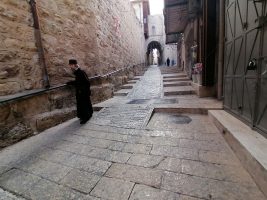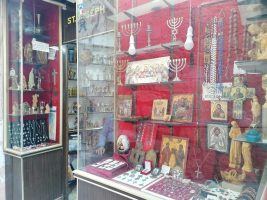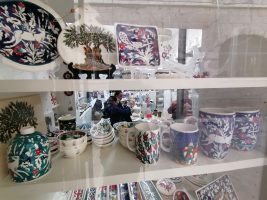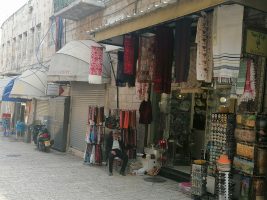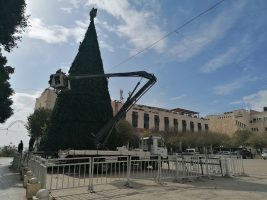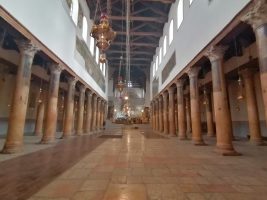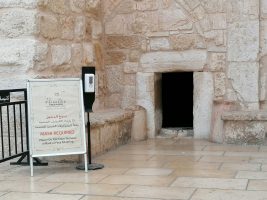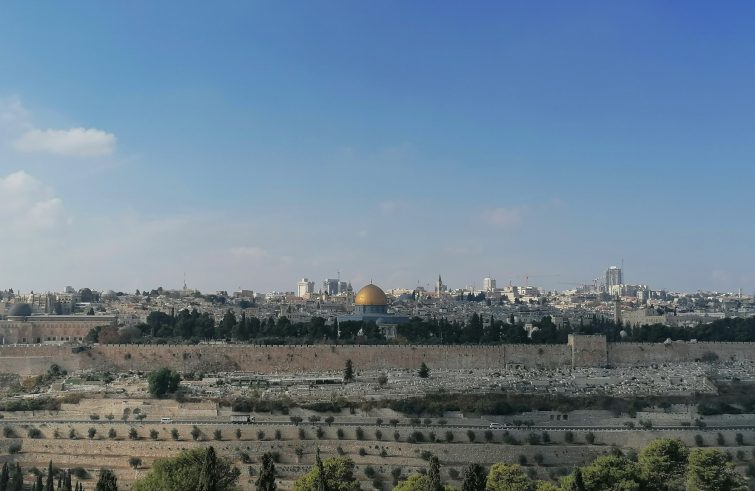
(From Jerusalem) “I was born during the 1948 war and I have seen many wars in my life. But Covid-19 is worse than any of them, because in addition to posing a threat to your life and that of your loved ones, it strips you of the strength to move forward. A house can be rebuilt, but what is at stake now is your future, your job, the possibility of being self-sufficient and giving your family a dignified life. We haven’t seen a tourist or a pilgrim here for the past two years. How are we supposed to manage?” Youssef, the owner of one of many small shops in the Old City of Jerusalem, voices his worries from the Christian section of the Holy City, a few steps away from the Basilica of the Holy Sepulchre. Before the outbreak of the pandemic, pilgrims flocked to this site all the time. But today it feels surreal, as there is no one to be seen.
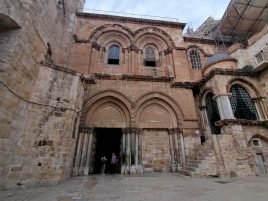 Even the Via Dolorosa, normally full of pilgrims, is virtually deserted. As Youssef speaks, he wipes the dust off the objects on display in his shop window: “The borders are closed, people hardly travel because they are afraid. All we can do is wait for all this to be over. But when will that be?” he wonders disheartened. Nearby, in an Armenian pottery workshop, women are busy creating new decorations to display in a shop with no customers. Many small businesses have shut down and there is no certainty that they will reopen. Restaurants, hotels and other accommodation facilities are also closed. Along these narrow streets, the Israeli government’s decision to re-open its borders to solo tourists last November is not seen as encouraging. In Bethlehem, the situation is even worse, with an empty Manger square in front of the Nativity Church. The souvenir shops, once bustling with pilgrims, are now empty. The city council started preparations for the placement of the traditional decorated Christmas tree opposite the Peace Centre. The city where Jesus was born wants to be all set for this coming Christmas. A group of Spanish pilgrims enters the Basilica amidst young people and children hoping to earn some money by selling rosaries, postcards, mother-of-pearl items and handbags “made of real camel skin.” In this area, pilgrims from Galilee, from the north of Israel, are very much counted on to provide them with some financial respite. While waiting to welcome visitors from world countries.
Even the Via Dolorosa, normally full of pilgrims, is virtually deserted. As Youssef speaks, he wipes the dust off the objects on display in his shop window: “The borders are closed, people hardly travel because they are afraid. All we can do is wait for all this to be over. But when will that be?” he wonders disheartened. Nearby, in an Armenian pottery workshop, women are busy creating new decorations to display in a shop with no customers. Many small businesses have shut down and there is no certainty that they will reopen. Restaurants, hotels and other accommodation facilities are also closed. Along these narrow streets, the Israeli government’s decision to re-open its borders to solo tourists last November is not seen as encouraging. In Bethlehem, the situation is even worse, with an empty Manger square in front of the Nativity Church. The souvenir shops, once bustling with pilgrims, are now empty. The city council started preparations for the placement of the traditional decorated Christmas tree opposite the Peace Centre. The city where Jesus was born wants to be all set for this coming Christmas. A group of Spanish pilgrims enters the Basilica amidst young people and children hoping to earn some money by selling rosaries, postcards, mother-of-pearl items and handbags “made of real camel skin.” In this area, pilgrims from Galilee, from the north of Israel, are very much counted on to provide them with some financial respite. While waiting to welcome visitors from world countries.
- Scorcio del quartiere cristiano di Gerusalemme (Foto SIR)
- (Foto SIR)
- (Foto SIR)
- (Foto SIR)
“Local Christians working in the field of religious tourism are looking forward to it more than anyone else”, Adriana Sigilli, owner of Diomira Travel, a tour operator specialised in the organisation of pilgrimages, along with tours in Italy and around the world, told SIR. Ms Sigilli is spending some days in the Holy Land with a group of priests and pilgrimage coordinators from parishes and dioceses in Lombardy, including Piacenza and Milan. The group consists of about twenty people travelling to and from Jerusalem and Bethlehem. This was only the second pilgrimage to the Holy Places organised by Diomira Travel in the past two months. “Going on pilgrimages is allowed – the tourism manager explained – and pilgrimages should be undertaken to help our Christian communities who depend on these earnings. It’s also a substantial way to offer them hope for the future, and to recover and rediscover our faith and our spirituality.” Sigilli has launched a proposal to encourage the resumption of pilgrimages to the Holy Land: “To create the conditions for facilitating the entry of Italian pilgrims into the country through COVID-free corridors.” Pilot COVID-free travel corridors have been put in place following a decree – enshrining specific health measures – issued by Health Minister Speranza to six non-EU countries: Aruba, the Maldives, Mauritius, Seychelles and the Dominican Republic, plus the tourist resorts of Sharm el-Sheikh and Marsa Alam in Egypt. “Why not extend this option also to pilgrimages? It involves facilitating entry into Israel and departure procedures – while safeguarding public health and safety – making the most of the very good relations between Italy and Israel and between Israel and EU member states,” Sigilli explained.
At present, entry into Israel is subject to the completion of online registration forms and to a Green Pass (valid 180 days from the date of the second dose of the vaccine or 14 days from the third dose), plus three molecular swab tests: 72 hours before departure, on arrival at the airport in Tel Aviv and the third 72 hours before leaving for Italy. The latter two must be booked online. “Such complex procedures have prevented ten priests from joining the delegation and therefore it increased travel costs”, Ms Sigilli added, for whom “a simpler and faster but no less secure procedure should be developed.”
- (Foto SIR)
- (Foto SIR)
- (Foto SIR)
The Diomira Travel manager reiterated her proposal in the meetings of her group during their stay in Jerusalem with the Custos of the Holy Land Father Francesco Patton, the Latin Patriarch of Jerusalem Pierbattista Pizzaballa, Italian Consul General in Jerusalem Giuseppe Fedele, Palestinian Tourism Minister Rula Maaya and Noga Sher-Greco, director of Religious Tourism at the Israeli Ministry of Tourism.
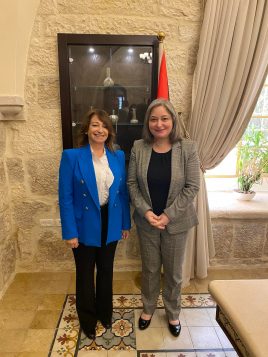 In her welcoming remarks to the Diomira Travel delegation at her office in Bethlehem, Minister Maaya called for “making a pilgrimage to the birthplace of Jesus and to employ the services of Palestinian travel agents to help revitalise the local economy already plagued by Israeli military occupation, unemployment and now by COVID. We are trying to prevent emigration of families from Bethlehem and we are therefore asking for your support while they are still here. It hurts us to see our people leaving Palestine,” the Minister added. Cases of infection are few: “as of 17 November, only 15 cases of infection had been reported in the Bethlehem Governorate (with a population of over 200,000)”, and there are some encouraging signs of recovery. “We are currently developing a number of projects aimed at improving tourist hospitality,” the Minister concluded, “which will ensure that our accommodation facilities are ‘ready’. And it is no coincidence that ‘Ready’ is the logo of the campaign. Ready to welcome all pilgrims who wish to return to Bethlehem. This Christmas, we don’t want to see empty churches in Bethlehem.”
In her welcoming remarks to the Diomira Travel delegation at her office in Bethlehem, Minister Maaya called for “making a pilgrimage to the birthplace of Jesus and to employ the services of Palestinian travel agents to help revitalise the local economy already plagued by Israeli military occupation, unemployment and now by COVID. We are trying to prevent emigration of families from Bethlehem and we are therefore asking for your support while they are still here. It hurts us to see our people leaving Palestine,” the Minister added. Cases of infection are few: “as of 17 November, only 15 cases of infection had been reported in the Bethlehem Governorate (with a population of over 200,000)”, and there are some encouraging signs of recovery. “We are currently developing a number of projects aimed at improving tourist hospitality,” the Minister concluded, “which will ensure that our accommodation facilities are ‘ready’. And it is no coincidence that ‘Ready’ is the logo of the campaign. Ready to welcome all pilgrims who wish to return to Bethlehem. This Christmas, we don’t want to see empty churches in Bethlehem.”
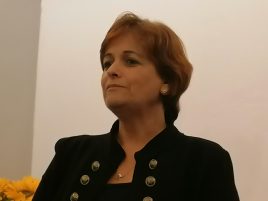 Speaking to the Diomira Travel delegation in Jerusalem, Noga Sher-Greco reiterated Israel’s commitment to facilitating visits to the country. “Whether or not COVID-free corridors for incoming pilgrims can be created – she said – largely depends on the rate of infections in the world and in the countries closest to us. Should these figures decline, we could look into ways to simplify procedures without undermining public health precautions. We are aware that many groups of pilgrims are postponing their departure for Israel to complete the vaccination cycle. In the meantime, many hotels and accommodation facilities in Israel are being renovated. When pilgrims return, they will find many innovations.” ‘Green’ pilgrimages are also being planned in the wake of the Laudato si’ encyclical, offering itineraries on foot and by bicycle to the holy sites.” “The pandemic – Sher-Greco added – has altered our approach to tourism and pilgrimage. As in other parts of the world, in Israel we are experiencing the rediscovery of sites and locations close to home, such as parks and archaeological sites, easy to reach in a short time, thus avoiding long journeys and unnecessary exposure. We are seeing Arabs discovering Jewish sites and vice versa.” The record numbers of 2019, when over 4 million tourists visited Israel, half of them pilgrims – including 190,000 Italians – are still a mirage. “It will take time and careful planning,” Sher-Greco concluded, “but Israel is ready to welcome pilgrims in full security.”
Speaking to the Diomira Travel delegation in Jerusalem, Noga Sher-Greco reiterated Israel’s commitment to facilitating visits to the country. “Whether or not COVID-free corridors for incoming pilgrims can be created – she said – largely depends on the rate of infections in the world and in the countries closest to us. Should these figures decline, we could look into ways to simplify procedures without undermining public health precautions. We are aware that many groups of pilgrims are postponing their departure for Israel to complete the vaccination cycle. In the meantime, many hotels and accommodation facilities in Israel are being renovated. When pilgrims return, they will find many innovations.” ‘Green’ pilgrimages are also being planned in the wake of the Laudato si’ encyclical, offering itineraries on foot and by bicycle to the holy sites.” “The pandemic – Sher-Greco added – has altered our approach to tourism and pilgrimage. As in other parts of the world, in Israel we are experiencing the rediscovery of sites and locations close to home, such as parks and archaeological sites, easy to reach in a short time, thus avoiding long journeys and unnecessary exposure. We are seeing Arabs discovering Jewish sites and vice versa.” The record numbers of 2019, when over 4 million tourists visited Israel, half of them pilgrims – including 190,000 Italians – are still a mirage. “It will take time and careful planning,” Sher-Greco concluded, “but Israel is ready to welcome pilgrims in full security.”

